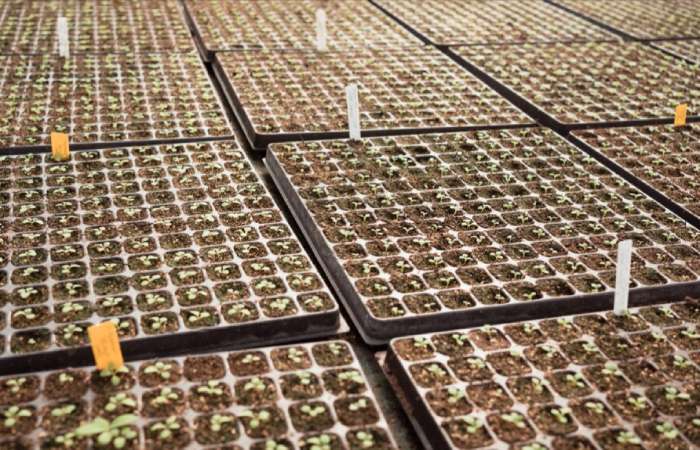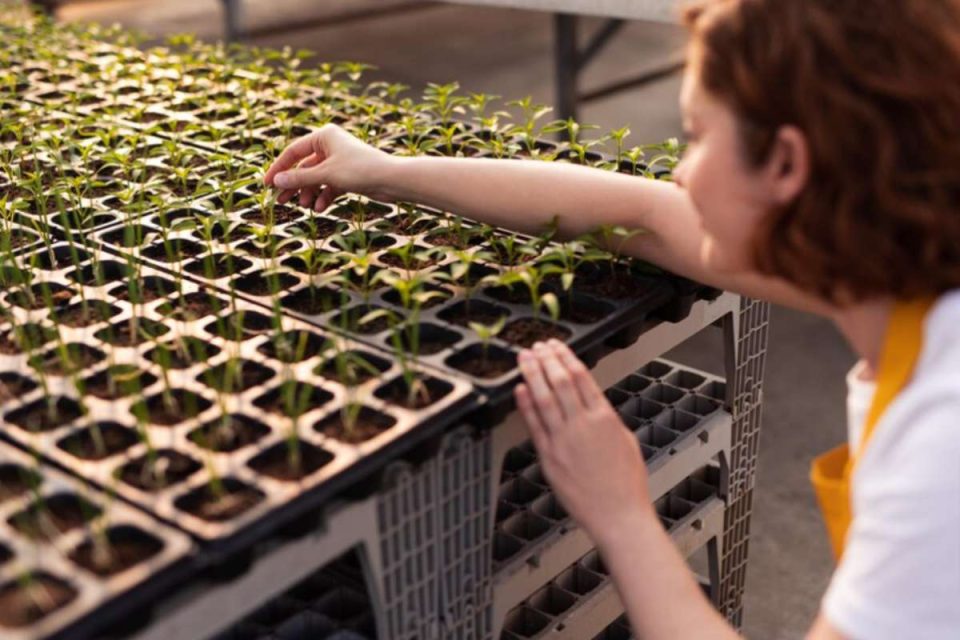Table of Contents
Introduction: Harnessing Sunlight for Seedling Success
Placement in Greenhouses: Sunlight is the lifeblood of plant growth, and in the controlled environment of a greenhouse, strategic seed tray placement plays a crucial role in ensuring optimal exposure to sunlight. This article explores effective strategies for placing seed trays in greenhouses, maximizing sunlight absorption and fostering the healthy development of seedlings.
Understanding Sunlight Requirements for Seedlings
Before delving into placement strategies, it’s essential to grasp the sunlight needs of seedlings. Different plant species have varying requirements for sunlight intensity and duration. While some plants thrive in full sunlight, others may prefer partial or filtered sunlight. Understanding the specific needs of the seeds being germinated is the first step toward successful greenhouse gardening.
Utilizing South-Facing Placement for Maximum Exposure
In the Northern Hemisphere, south-facing exposure receives the most sunlight throughout the day. Placing seed trays along the southern side of the greenhouse capitalizes on this natural solar trajectory, providing seedlings with ample sunlight. This strategy is particularly effective during the winter months when sunlight is limited, ensuring that seedlings receive the maximum available light.
Adjusting Tray Heights to Accommodate Plant Growth
As seedlings sprout and grow, their height and leaf canopy expand. To ensure uniform sunlight exposure, adjusting tray heights is a simple yet effective strategy. Taller seedlings at the back of the greenhouse may cast shadows on their shorter neighbors if not properly managed. Regularly monitoring and adjusting tray heights accommodate the dynamic growth of seedlings, preventing shading and optimizing sunlight distribution.
Utilizing Shelving Systems for Vertical Sunlight Distribution
In space-limited greenhouses, vertical shelving systems offer a practical solution for maximizing sunlight exposure. By organizing seed trays on shelves, each tray receives direct sunlight, minimizing shading concerns. This approach is particularly advantageous for small-scale greenhouse setups or when cultivating a variety of plant species with different light requirements.
Implementing Rotation Strategies for Even Exposure
Even with optimal south-facing placement, certain areas of the greenhouse may receive more direct sunlight than others due to factors such as obstructions or structural elements. To address this, regularly rotating seed trays ensures that each tray experiences a fair share of direct sunlight over time. This rotation strategy promotes even growth and prevents any single area from becoming overly shaded.
Utilizing Shade Cloth for Sunlight Diffusion

While direct sunlight is essential, excessive intensity can lead to heat stress and scorching of delicate seedlings. To strike a balance, especially in regions with intense sunlight, using shade cloth becomes a valuable tool. Placing shade cloth strategically over seed trays diffuses sunlight, reducing its intensity while still providing the necessary light for healthy seedling development.
Considering East-Facing Placement for Morning Sunlight
In certain situations, an east-facing placement may be advantageous. East-facing exposure allows seed trays to capture the morning sunlight, which is often cooler and less intense than the afternoon sun. This can be beneficial for heat-sensitive seedlings or in regions with hot climates, offering a gentler start to the day for the developing plants.
Optimizing Greenhouse Design for Light Penetration
The design of the greenhouse itself plays a pivotal role in sunlight exposure. Greenhouses with features such as polycarbonate panels or glazed surfaces enhance light penetration, ensuring that sunlight reaches all corners of the space. When considering greenhouse options, features that facilitate maximum light transmission contribute to the success of seedling growth.
Investing in Quality Greenhouse Kits for Optimal Growing Conditions
For those embarking on greenhouse gardening, investing in quality greenhouse kits is a foundational step. These kits, which include essential components like durable frames and light-permeable covers, create an environment conducive to successful seed germination.
Conclusion And Final Words
In the art of greenhouse gardening, the placement of seed trays is a key determinant of seedling success. By strategically harnessing sunlight through south-facing exposure, adjustable tray heights, shelving systems, rotation strategies, and thoughtful consideration of greenhouse design, gardeners can create an environment that nurtures healthy, vibrant seedlings. Investing in quality greenhouse kits from trusted suppliers ensures that the foundation for optimal growing conditions is firmly in place, setting the stage for a successful journey from seed to harvest. Besides this already running greenhouses for sale are available. For more information you may visit https://planetgreenhouse.com for the best and reasonable deal.

